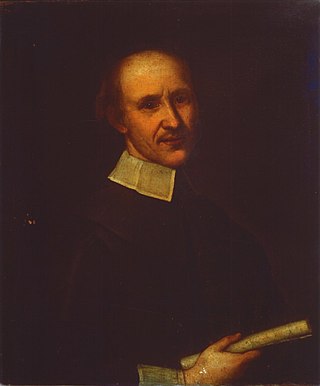(Gian) Giacomo Carissimi was an Italian composer and music teacher. He is one of the most celebrated masters of the early Baroque or, more accurately, the Roman School of music. Carissimi established the characteristic features of the Latin oratorio and was a prolific composer of masses, motets, and cantatas. He was highly influential in musical developments in northern European countries through his pupils, like Kerll in Germany and Charpentier in France, and the wide dissemination of his music.
Giaches de Wert was a Franco-Flemish composer of the late Renaissance, active in Italy. Intimately connected with the progressive musical center of Ferrara, he was one of the leaders in developing the style of the late Renaissance madrigal. He was one of the most influential of late sixteenth-century madrigal composers, particularly on Claudio Monteverdi, and his later music was formative on the development of music of the early Baroque era.

Cipriano de Rore was a Franco-Flemish composer of the Renaissance, active in Italy. Not only a central representative of the generation of Franco-Flemish composers after Josquin des Prez who went to live and work in Italy, Rore was one of the most prominent composers of madrigals in the middle of the 16th century. His experimental, chromatic, and highly expressive style had a decisive influence on the subsequent development of that secular music form.

Cristóbal de Morales was a Spanish composer of the Renaissance. He is generally considered to be the most influential Spanish composer before Tomás Luis de Victoria.

Tarquinio Merula was an Italian composer, organist, and violinist of the early Baroque era. Although mainly active in Cremona, stylistically he was a member of the Venetian school. He was one of the most progressive Italian composers of the early 17th century, especially in applying newly developed techniques to sacred music.

Giovanni Legrenzi was an Italian composer of opera, vocal and instrumental music, and organist, of the Baroque era. He was one of the most prominent composers in Venice in the late 17th century, and extremely influential in the development of late Baroque idioms across northern Italy.

Ruggiero Giovannelli was an Italian composer of the late Renaissance and early Baroque eras. He was a member of the Roman School, and succeeded Palestrina at St. Peter's.
Giovanni Girolamo Kapsperger was an Austrian-Italian virtuoso performer and composer of the early Baroque period. A prolific and highly original composer, Kapsberger is chiefly remembered today for his lute and theorbo (chitarrone) music, which was seminal in the development of these as solo instruments.

Isabella Leonarda was an Italian composer from Novara. At the age of 16, she entered the Collegio di Sant'Orsola, an Ursuline convent, where she stayed for the remainder of her life. Leonarda is most renowned for the numerous compositions that she wrote during her time at the convent, making her one of the most productive female composers of her time.
The decade of the 1540s in music involved some significant events.

Cataldo Vito Amodei was an Italian composer of the mid-Baroque period who spent his career in Naples. His cantatas were important predecessors to the active cantata production of 18th-century Naples, and he stands with the elder Francesco Provenzale and younger Alessandro Scarlatti as among the principal Italian cantata composers. Other surviving works include a book of motets dedicated to Leopold I, Holy Roman Emperor; a serenata; two pastorales; two psalms; and four oratorios, which were important contributions to their genre.
Antonino Barges was a Franco-Flemish composer of the Renaissance, active in Venice and Treviso. While known as a composer of light popular secular forms such as the villotta, he also wrote motets and a Requiem. He was a friend and probably a student of Adrian Willaert, the founder of the Venetian School, and was listed as a witness to Willaert's last will and testament.
Rocco Rodio was an Italian Renaissance composer and theorist, best known for his sacred works and keyboard ricercares.
Leone Leoni was a North Italian polyphonic composer who served as maestro di cappella at Vicenza Cathedral from 1588. He composed motets for antiphonal choirs, some in many parts, with instrumental accompaniment. As would be expected of a cathedral maestro di cappella, he also produced masses, psalms, magnificats and other liturgical music, some published in his Cantici sacri (1608) as well as sacred and secular madrigals.
Giovanni Felice Sances was an Italian singer and a Baroque composer. He was renowned in Europe during his time.
Tiburzio Massaino was an Italian composer.
Carlo Milanuzzi was an Italian composer of the early Baroque era.

The church of Santa Maria in Araceli is a late-Baroque style church built in the late 17th century in Vicenza according to designs attributed to Guarino Guarini.
Cappella Artemisia is an Italian all-female vocal group specializing in the music of the convents of 17th-century Italy. The group was founded by the American, but resident in Italy, singer and musicologist Candace Smith. Smith is also co-publisher, with her husband cornettist Bruce Dickey of editions of this music through Artemisia Editions. The main repertoire of the group focuses on nun composers themselves - including Raphaella Aleotti, the first nun to publish as a composer, Maria Xaveria Perucona and Isabella Leonarda, Chiara Margarita Cozzolani and Rosa Giacinta Badalla, Sulpitia Cesis, Alba Tressina, Lucrezia Orsina Vizzana and Caterina Assandra. The ensemble also performs works of the male composers - some monks, some secular - who dedicated works to the convents.
Giovanni Paolo Caprioli was an Italian priest, abbate in Candiana, and composer.








